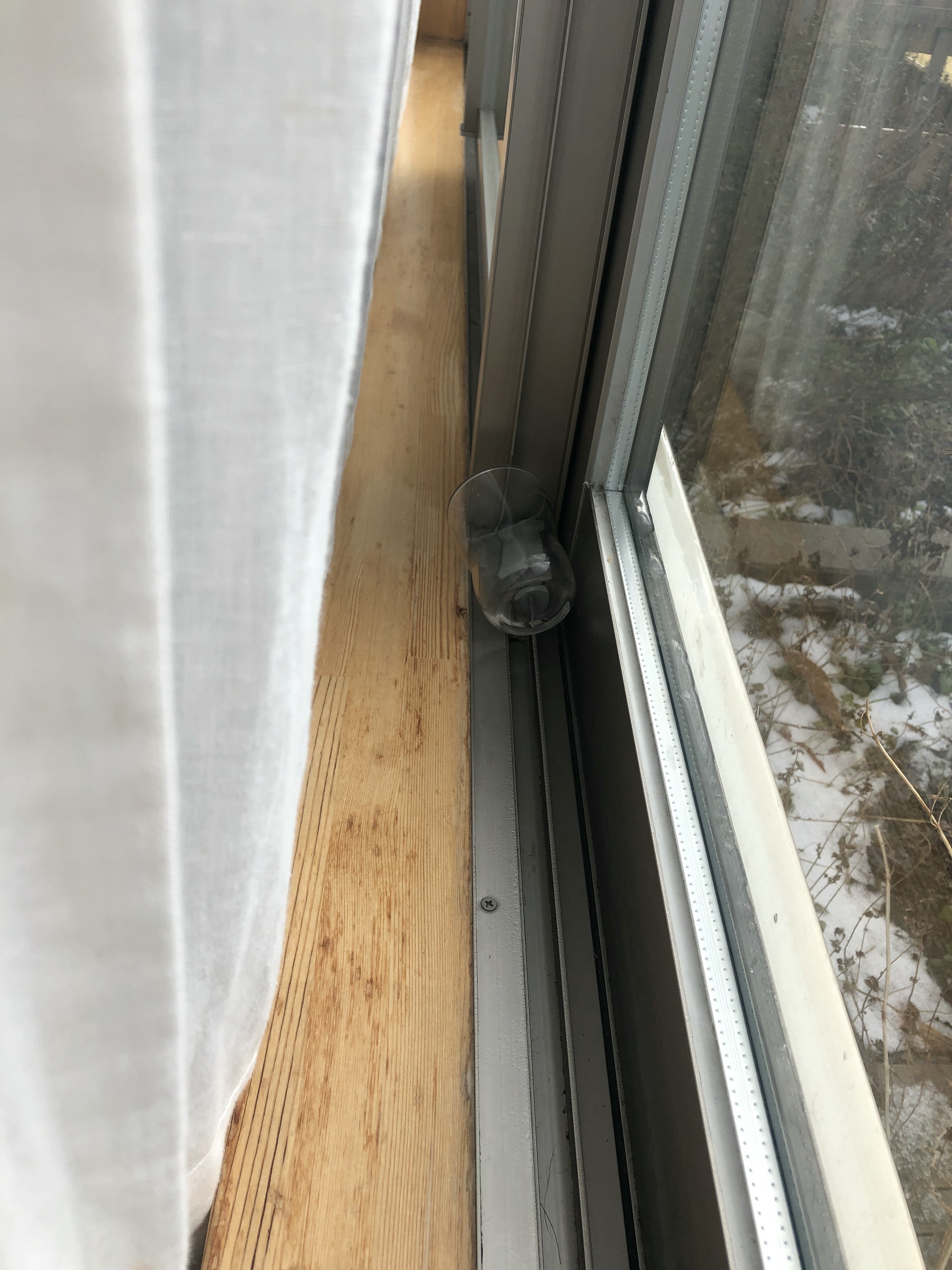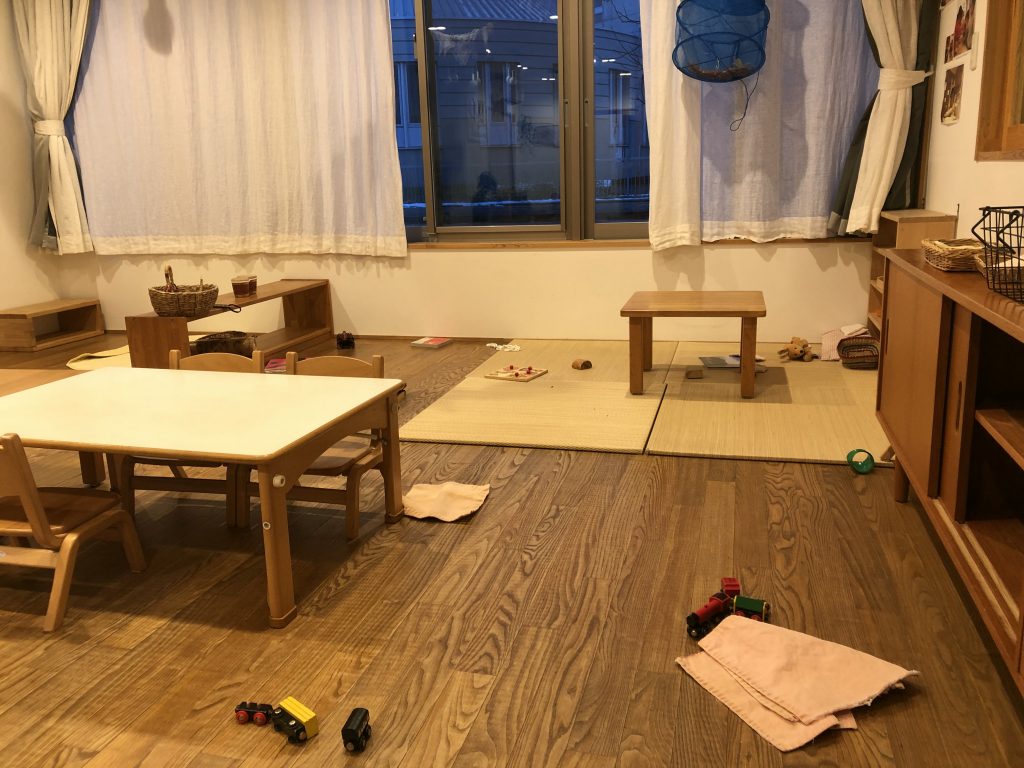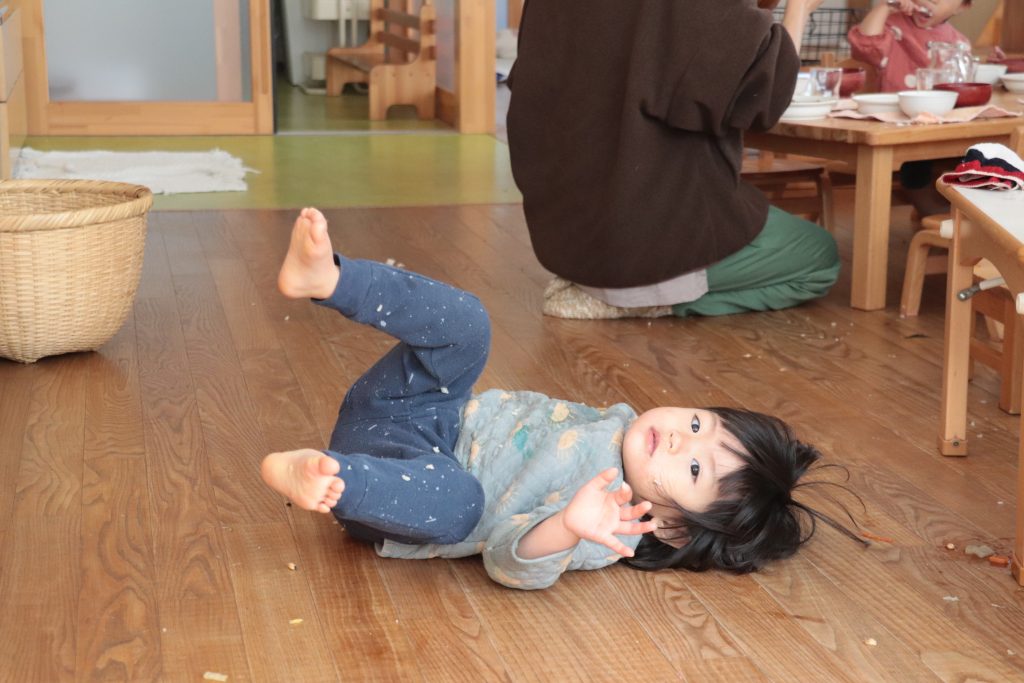
2021.09.01 Following the Trail of a Child’s Heart
Text : Yukari Sato
It was lunch time when I went in to check in on the childcare room. T spotted me and came up to me. She pulled my hand and hid behind the curtains, “Together with you, Yukari”
“Boo!”
T peeked out from the hem of the curtain. After a few times, my eyes suddenly shifted to the back of the curtain. I found a cup lying on the window sill.
T said, “A cup” “It’s cold”. The cup was cold, and there was a scrap of miso soup in it. It seemed to be the cup a child had used for lunch yesterday.
When T grasped the cup, the temperature difference between her hand and the cup made the surface of the cup darken, and T stared at it for a while.
I received a cool cup from T. I imagined a child I hadn’t noticed in yesterday’s care, and wondered if she/he was hiding behind the curtains while their own time was passing.
I would like to introduce a sentence from Makoto Tsumori’s “How to See the World of Children.”
After the children have left or gone to sleep, the caregiver is given a moment of freedom from the pressing demands of reality, and is given a moment to mindlessly clean. Tricycles are tipped over, blocks are scattered in unexpected places, and in many places, we find traces of the child’s heart that we had not noticed during our care. At the same time, the experience of responding to the child and the images of materials come back to me. All of these things come from the other side of the room when we are mindlessly cleaning. It’s as if they are asking you to stop your mind and look again. (How to See the World of Children, Makoto Tsumori, p. 183)
Cleaning up the rooms during naptime and after evening care reminds us of the play that we don’t notice in our daily lives, and the episodes with the staff that we are too busy to notice. And the staff themselves look back on the children’s images that they could not write down in their notes. I believe that observing and trying to feel the expressions of children in their daily lives is also directly related to the relationship with the child.
Even for a brief moment before I go home and fall asleep in my futon, I reflect on the events of the day and then, as the sun rises and the day begins, I reconnect with my children and myself.
One day at lunch, A was eating rice with her hands, with rice grains all over her body. Rice grains spread all over the floor. A lays down there after finishing her meal. Up until this point, I had always said to her, “If you lie there, I think you’ll get some rice on you,” but this time I decided to take a closer look at her. Her eyelids slowly closed and opened as she stared at the ceiling. Even if there were rice grains on her clothes or hair, she didn’t care. She sways her legs from side to side and sucks her toes. From the way she looked, I sensed that she was sleeping slightly, breathing deeply, and feeling happy in an unconscious realm. It brought back pleasant memories of lying on tatami mats with a full stomach when I was a child, and I wanted her to experience the “feeling of being filled without words.” I felt like it was a time when I was able to receive her actions as an expression of A, moving back and forth between her worldview and mine.
We can see that behind the child’s behavior is the child’s internal world. Furthermore, adults, who have their own world, capture the behavior of children. Observed behaviors are in the middle of the child’s world and the adult’s world, and without considering these two worlds, it would be impossible to focus only on objective behaviors. (The Beginning of Child Study, Makoto Tsumori, p.13)
I believe that space, place, and sensitivity are nurtured by the interaction between the worldview of the child and that of the adults involved in the child’s daily life. If the adult’s presence is too large, or if the adult is too judgmental about the interpretation of the child’s expression, the world will quickly change, so it is really difficult to know how to interact with the child, and there are no answers. It is a constant process of questioning and judging, and it tests the insight of the caregiver.
After a few moments, A went to her futon by herself. An adult was waiting for her at the end of her walk and said, “Your whole body is covered with rice crumbs! Let’s go to the bathroom and feel better.”
















 PREV
PREV